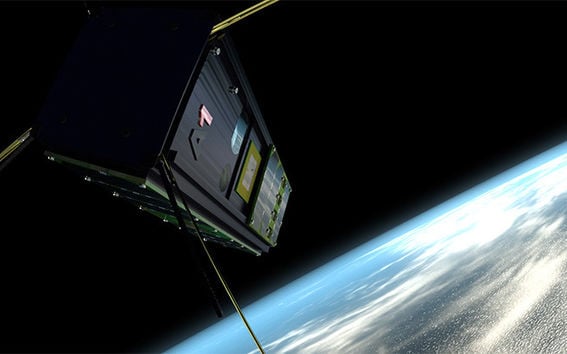Busy summer ahead for students

The five-year project is nearing completion. Finland's first ever satellite will be launched at the end of this year.
'When we started in 2010 with the students' idea of designing a nanosatellite, everything was completely new and there were a lot of questions associated with the project. We've progressed with great enthusiasm. The best part has been finding that we didn't really deviate from the initial plans and the current implementation is nearly the same as what we originally planned,' explains Professor Jaan Praks, who is the responsible leader of the project.
More than 80 students have taken part in the project and it has produced dozens of master's and bachelor's theses, many conference publications and several scientific publications. The Falcon 9 rocket will be launched at the end of this year to orbit at an elevation of approximately 600 km. In addition to Aalto-1, the rocket will carry several other small nanosatellites.
'Even after the launch, we will still have two years of work ahead of us,' mentions Antti Kestilä, who is a system engineer and doctoral candidate.
The people building Aalto-1: Professor Jaan Praks (left), Henrik Forstén, Antti Kestilä, Antti Näsilä from VTT, Tuomas Tikka, Sami Nieminen, Mikko Lankinen and Leo Nyman.
Construction of a flight model beginning
The Aalto-1 engineering model, which was made specifically for testing, is currently spending most of its time in a thermal chamber. The thermal chamber located in the laboratory facilities at Otaniemi tests how different parts tolerate the huge temperature changes that occur in space. Assembly of the Aalto-1 flight model, which is the final model that will be launched into space, will begin during the next few weeks.
'The parts of the satellite flight model have been anodised, which means that the parts have been coated so that they can tolerate the extreme conditions of launch. In order to ensure that everything is just right, we will do a test assembly on an engineering model before we start working on the final flight model,' says student Sami Nieminen.
The antenna system is a particular target of testing. If the antenna cannot be successfully opened in space, it will be difficult to connect with the satellite from the ground station located in Otaniemi. Student Henrik Forstén, who is responsible for assembling the radio system, says that two radio frequencies have been reserved for satellite communication and they have been tested and verified as functional. Further work is needed on the communications software, which listens to the radio and, for example, controls the transfer of files. The students not only designed the satellite itself but also the terminal computer, radios, frame, antennas and solar panels.
'Building the actual radio systems wasn't very difficult, but the computer has been challenging. The way that our Linux-based terminal computer actually works with the equipment and hardware is not taught at university, and this can only be learned in practice,' states Forstén.
Many other systems that students are working on play an important role, including the electrical system and software development as well as the solar panels that produce the electricity required for the Finnish satellite.
Aalto-1 is a student satellite project that is led by the Department of Radio Science and Engineering of the School of Electrical Engineering at Aalto University. Aalto-1 will take important Finnish space expertise into space for testing. A new type of spectrometer device developed by VTT will be used for remote environmental sensing, while a radiation meter built by students from the University of Helsinki and University of Turku will take radiation measurements. Aalto-1 will also test an electrostatic plasma brake for deorbiting satellites that was designed by the Finnish Meteorological Institute.
Read more news

Get to know us: Associate Professor Maria Sammalkorpi
Sammalkorpi received her doctorate from Helsinki University of Technology 2004. After her defence, she has worked as a researcher at the Universities of Princeton, Yale and Aalto.
Aalto computer scientists in ICML 2024
Computer scientists in ICML 2024
Getting bacteria into line
Physicists use magnetic fields to manipulate bacterial behaviour